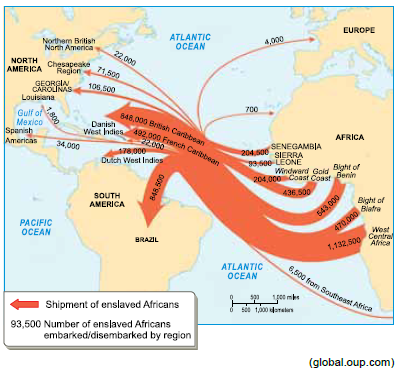Questões de Vestibular UNESP 2018 para Vestibular - Primeiro Semestre
Foram encontradas 12 questões
Entre 11 de fevereiro e 03 de junho de 2018, o Museu de Arte Moderna de Nova Iorque (MoMA) abrigou a primeira exposição nos Estados Unidos dedicada à pintora brasileira Tarsila do Amaral. Leia a apresentação de uma das pinturas expostas para responder às questões
The painting Sleep (1928) is a dreamlike representation
of tropical landscape, with this major motif of her repetitive
figure that disappears in the background.
This painting is an example of Tarsila’s venture into surrealism. Elements such as repetition, random association, and dreamlike figures are typical of surrealism that we can see as main elements of this composition. She was never a truly surrealist painter, but she was totally aware of surrealism’s legacy.
(www.moma.org. Adaptado.)
Entre 11 de fevereiro e 03 de junho de 2018, o Museu de Arte Moderna de Nova Iorque (MoMA) abrigou a primeira exposição nos Estados Unidos dedicada à pintora brasileira Tarsila do Amaral. Leia a apresentação de uma das pinturas expostas para responder às questões
The painting Sleep (1928) is a dreamlike representation
of tropical landscape, with this major motif of her repetitive
figure that disappears in the background.
This painting is an example of Tarsila’s venture into surrealism. Elements such as repetition, random association, and dreamlike figures are typical of surrealism that we can see as main elements of this composition. She was never a truly surrealist painter, but she was totally aware of surrealism’s legacy.
(www.moma.org. Adaptado.)
Leia o trecho do artigo de Jason Farago, publicado pelo jornal The New York Times, para responder às questões
She led Latin American Art in a bold new direction

In 1928, Tarsila do Amaral painted Abaporu, a landmark work of Brazilian Modernism, in which a nude figure, half-human and half-animal, looks down at his massive, swollen foot, several times the size of his head. Abaporu inspired Tarsila’s husband at the time, the poet Oswald de Andrade, to write his celebrated “Cannibal Manifesto,” which flayed Brazil’s belletrist writers and called for an embrace of local influences – in fact, for a devouring of them. The European stereotype of native Brazilians as cannibals would be reformatted as a cultural virtue. More than a social and literary reform movement, cannibalism would form the basis for a new Brazilian nationalism, in which, as de Andrade wrote, “we made Christ to be born in Bahia.”
The unconventional nudes of A Negra, a painting produced in 1923, and Abaporu unite in Tarsila’s final great painting, Antropofagia, a marriage of two figures that is also a marriage of Old World and New. The couple sit entangled, her breast drooping over his knee, their giant feet crossed one over the other, while, behind them, a banana leaf grows as large as a cactus. The sun, high above the primordial couple, is a wedge of lemon.
(Jason Farago. www.nytimes.com, 15.02.2018. Adaptado.)
Leia o trecho do artigo de Jason Farago, publicado pelo jornal The New York Times, para responder às questões
She led Latin American Art in a bold new direction

In 1928, Tarsila do Amaral painted Abaporu, a landmark work of Brazilian Modernism, in which a nude figure, half-human and half-animal, looks down at his massive, swollen foot, several times the size of his head. Abaporu inspired Tarsila’s husband at the time, the poet Oswald de Andrade, to write his celebrated “Cannibal Manifesto,” which flayed Brazil’s belletrist writers and called for an embrace of local influences – in fact, for a devouring of them. The European stereotype of native Brazilians as cannibals would be reformatted as a cultural virtue. More than a social and literary reform movement, cannibalism would form the basis for a new Brazilian nationalism, in which, as de Andrade wrote, “we made Christ to be born in Bahia.”
The unconventional nudes of A Negra, a painting produced in 1923, and Abaporu unite in Tarsila’s final great painting, Antropofagia, a marriage of two figures that is also a marriage of Old World and New. The couple sit entangled, her breast drooping over his knee, their giant feet crossed one over the other, while, behind them, a banana leaf grows as large as a cactus. The sun, high above the primordial couple, is a wedge of lemon.
(Jason Farago. www.nytimes.com, 15.02.2018. Adaptado.)

Based on the information presented by the map, one can say that, from 1731 to 1775,